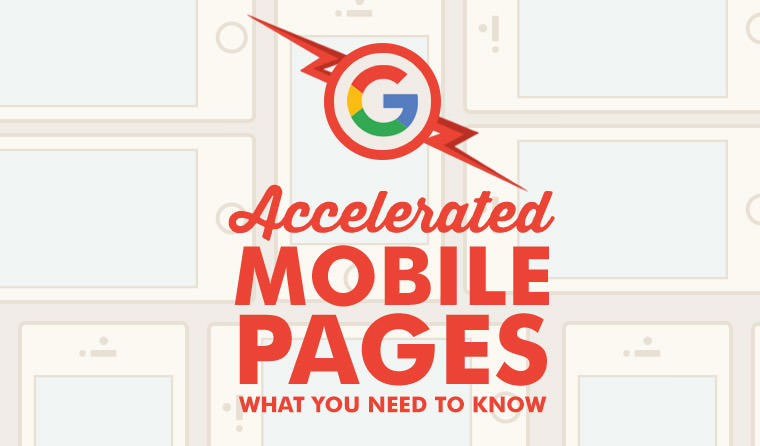Google’s Accelerated Mobile Pages – What’s Next?

We’ve talked about accelerated mobile pages (AMP) on our blog before, and if you’re a regular reader, you know how important mobile friendliness is, especially when you’re talking about Google. If you need a quick refresher on accelerated mobile pages, you can check out Erik’s previous post on the topic. For a quick refresher though, they’re simplified pages that are designed to load much faster on mobile devices by removing “heavy” elements like ads and cookies.
Originally, AMP was used for news articles but expanded to other forms of content and is currently being used by several major publishers. This week, Google announced that accelerated mobile pages will roll out into their main mobile search results. According to industry expert Jennifer Slegg, searchers on mobile devices will begin to see AMP content denoted with a lightning bolt in search results, much like the current mobile-friendly badge.
So, what do we know about the change and what does it mean for the future of mobile search?
What We Know
First things first. The change is not live in Google’s search results yet, but that’s expected to happen sometime later this year.
Next, there is no rankings boost associated with the use of AMP. Rather, sites will continue to benefit from being mobile friendly in general. Accelerated mobile pages will be given a preference in search results when both an AMP and mobile friendly version of a page exist. While there isn’t a benefit from a rankings perspective currently, that doesn’t mean Google won’t choose to reward sites using accelerated mobile pages in the future. In the meantime, sites may see an increased clickthrough rate when using AMP, resulting in increased traffic from mobile devices.
What We Do Now
Technically, accelerated mobile pages are still in their early days, and development remains a challenge. Some CMS plugins exist, but the results may be mixed. Currently, your best bet is working with a developer who can create code tailored to your site and your CMS. Google does have an AMP validator tool available to help developers check for implementation errors.
The Future Is Here
First it was mobile websites, then responsive design, and now it’s content in an instant. Google’s Accelerated Mobile Pages initiative is the first step in the new mobile web. Soon, it won’t be enough just to have a fast site that looks great on a smartphone. Instant content has already taken hold in social media with Facebook’s Instant Articles, and with Google’s planned rollout, I predict that it’s only going to become more popular. If you’re not on board with AMP already (unless you’re the owner of a pretty big website you’re probably not), it’s time to start thinking about it. Planning ahead today could give you an edge on the competition tomorrow.
